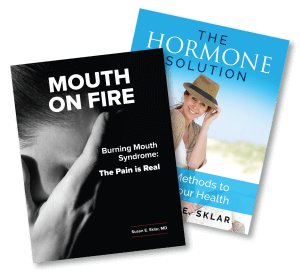Women’s Orgasms: The Mysteries Revealed
Between 10% and 15% of women have never had an orgasm. Not only that, as many as half of women are dissatisfied with how often they reach orgasm. Sound familiar?
What is the Science?
Women have alarmingly few orgasms. As few as 25% of women may routinely reach orgasm through penetrative sex[1]. For men, that number is three times higher.
The male orgasm serves a clear purpose. Researchers, however, haven’t been able to find a clear purpose for women’s orgasms. Those researchers have suggested several possible benefits. None of them, however, have received serious testing. As a result, there is no clear evidence about the purpose of the female orgasm.
A 2016 study argues that women’s orgasms don’t have an obvious current benefit. It may, the study suggests, have at one time provided hormones that helped a woman ovulate[2]. Since there has been no real evolutionary need for the female orgasm to go away, it persists.
However, orgasms may still serve several important purposes. The pleasure that comes with orgasm can encourage females to have sex. It may also promote bonding with a sexual partner. That bonding does have significant benefits for both partners. Also, it encourages women to remain with their partners during difficult times. Lastly, it ensures that a man’s children will be raised safely by his partner.
What Is an Orgasm?
When a man orgasms, he ejects semen. That semen must leave his body in order for him to reproduce. The female orgasm, however, is not necessary for either pregnancy or ovulation.
Women’s orgasms may not have a clear purpose, but it does bring pleasure. The clitoris has approximately 8,000 nerve endings[3]. That’s twice as many as the penis!
Elisabeth Lloyd suggests that female orgasm encourages sexual excitement[4]. An excited woman is more likely to want to have sex. In turn, this increases her chances of getting pregnant. Orgasm is definitely not necessary for conception. Instead, it encourages women to have more sex.
What are the Health Benefits of Orgasm?
The internet is filled with articles that promote the health benefits of orgasm. It can improve your skin! It improves your hair! Orgasms make you healthier overall! In reality, there is little scientific evidence that orgasms offer a clear health benefit.
Scientists can’t prove the benefit. However, that does not mean that women’s orgasms do not have their own benefits.
Orgasms are pleasurable. Pleasurable sex can:
- Improve mood
- Relieve stress
- Boost immunity
- Foster better relationships between partners
You don’t have to orgasm to get pregnant. Some studies, however, suggest that orgasms can boost fertility. For example, one very small study measured how much sperm stays in the body after female orgasm[5]. This study did find that women held on to more sperm when they had an orgasm. The study, however, started with a very small sample. It needs to be repeated, ideally with a better design, before this theory is proven.
What Happens During Orgasm?
When both men and women are aroused, more blood flows to the genitals. They become more sensitive. This, in turn, makes sexual contact more pleasurable. As you become more aroused, your heart rate and blood pressure may increase. Then, your breathing may speed up. These signs all imply a coming orgasm.
Many women recognize these stages. Even if you have never thought about them before, you may recognize the signs of arousal. You may know what it feels like as you get closer to orgasm or as your arousal increases.
During orgasm itself, you may notice your inner muscles twitching. Rhythmic muscle spasms in the vagina often bring extreme pleasure during a woman’s orgasm[6]. Unlike men, for women, a single orgasm does not have to be the end of the sexual encounter. Men often need a resting phase before they can orgasm again. Women, on the other hand, can often continue the sexual cycle.
There are many theories about the stages of sexual arousal[7]. Those theories may differ in several ways, especially when it comes to female arousal. However, most theories include:
- Excitement: the building of arousal
- Plateau: arousal levels increase, but level off
- Orgasm: intense pleasure
- Resolution: arousal drops, often leaving behind a feeling of contentment
Truths About Orgasm
There are lot of myths out there about orgasm, especially women’s orgasms! Fortunately, there are some things that we do know[8].
1. Orgasm Can Increase the Odds of Conception.
During orgasm, those rhythmic contractions can help hold on to sperm and bring it up into the cervix. The more sperm you have in your cervix, the more likely you are to conceive. If you’re trying to have a baby, focus on your pleasure as well as his! Oral sex may also help with holding on to that sperm. Additionally, there’s good news: orgasm within 45 minutes of your partner’s ejaculation can help with sperm retention[9]. Women’s orgasms might not be a critical ingredient for pregnancy, but it can help. It’s also an added benefit!
2. Your Body Goes Through a Lot of Hormone Changes During Orgasm.
During both male and female orgasm, prolactin is released. This little hormone can help with milk production if you’re nursing. When clitoral stimulation leads to orgasm, your body will also release oxytocin. The “love hormone” has a ton of benefits! It can help stress or make you feel more like yourself during your period. Oxytocin is also known as the bonding hormone: it will help you feel more connected to your partner.
3. Orgasms Help With Pain Relief.
There are several reasons why orgasm can help with your pain levels. First and foremost, good stimulus–like the pleasure of sex or an orgasm–can help cancel out bad stimulus from pain. You’ll also be more likely to focus on sex instead of the pain that you’re feeling. Pleasure hormones flooding through your body can also help relieve your overall pain levels. Having a headache might not be as good an excuse to avoid sex as you thought! In fact, many women find that sex can help them relax and relieve some of the pain they’re in.
4. Orgasms Get Even Better as You Get Older.
As you get older, you’re actually more likely to have an orgasm. There are several reasons that this might be the case. As you get older, you’re often more comfortable in your own skin. You may be more willing to try new things. Many women report being more willing to ask for what they want in bed as they age. Not only that, you may have been with your partner longer. This increases both the ease of communication and your partner’s knowledge of your body. Women also often note an increase in clitoris size as they age.
5. It’s Not All About the Orgasm.
While reaching orgasm is great, many women don’t orgasm every time. It’s okay to not reach orgasm when you have sex! It’s even okay to enjoy sex without it. You can enjoy sex regardless of whether you reach orgasm or not. Many women find that they can enjoy many different types of stimulation regardless of whether they have an orgasm.
What Things Can Cause Problems Reaching Orgasm?
Orgasm brings with it a lot of pleasure and relaxation. Most women consider it a desirable result of sex. Unfortunately, there are a lot of things that can disrupt your ability to reach orgasm. Sometimes, it’s as simple as your state of mind. Other times, medical problems can get in the way of your orgasm[11].
Female Orgasmic Disorder
As many as 3.4-5.8% of US women struggle with female orgasmic disorder[10]. You may have this disorder if you cannot reach orgasm in spite of going through the normal stages of excitement and arousal. Some women have never had an orgasm. Others experienced orgasm in the past, but cannot reach it now due to trauma or other problems. If you suffer from inability to orgasm at all, therapy can help. You may need:
- Therapy
- Couples counseling, which can help both you and your partner
- Education on self-pleasure techniques
Lubrication Problems
Without lubrication, sex quickly becomes uncomfortable. Proper lubrication makes your partner’s touch glide over your skin, offering a pleasant sensation. If you struggle with vaginal dryness, however, that same touch can chafe. Anticipating discomfort may make it even harder for you to get and stay aroused. Artificial lubrication can help you get past this problem and enjoy sex again. Once enjoyment increases, so do your odds of reaching orgasm.
Pain During Sex
If you suffer from pain during sex, it can be hard to reach orgasm. In some cases, sex, especially orgasm, can help you deal with pain. The pleasant sensations from sex and orgasm can often replace the unpleasant sensations from pain on a temporary basis. Unfortunately, pain can also block your ability to enjoy sex. Pain during sex needs to be diagnosed and treated promptly.
Hormonal Imbalances
Your hormones are an important part of sexual balance. If they are out of balance, you may struggle to have satisfactory sex. A doctor can diagnose any problems with your hormones and help you get back normal sexual function.
History of Trauma
Trauma or relationship problems can also make women’s orgasms difficult. Remember, the body and mind have to work together for sex to work properly. If you feel ashamed of sex or desire, it can make it difficult to reach orgasm. Couples counseling can help!
Improving Your Ability to Reach Orgasm
There are several factors that can make it harder for you to reach orgasm[11]. Relationship problems, stress, or mental health issues are at the top of the list. You may also find yourself struggling if you’re in poor health physically. Abuse and trauma can also make it harder to orgasm. If you have had an abortion in the past, or if you suffered genital mutilation, it can create mental blocks that make it harder to enjoy sex. There’s good news, though! There are several things you can control that may increase your odds of orgasming.
- Exercise
- Daily affection from your partner
- Positive body image
- Sex education
- Talking about sex with your partner
- Masturbation
If you’re struggling with sexual pleasure or reaching orgasm, you may need a little extra help. Try using lubricants to make sex more comfortable. Ask your partner to focus more on your clitoris during sex. Discuss your fantasies with your partner so that you both have a better idea of what you like. You may also want to try masturbating during sex. If something doesn’t feel good, tell your partner about it! These simple strategies can go a long way toward increasing your ability to reach orgasm.
Orgasm: The Myths
Have you fallen into believing common myths about women’s orgasms? Make sure you’re aware of these myths and what they can mean for you.
Myth #1: Women Who Can’t Orgasm Have Mental Problems
Many mental challenges can make it harder to reach orgasm. A lack of orgasm, however, can stem from purely physical problems.
Myth #2: You Should Always Be Able to Orgasm From Penetrative Sex
Many women can actually only orgasm from clitoral stimulation. If you can’t orgasm through vaginal stimulation alone, you’re not alone!
Myth #3: Women Can’t Have Vaginal Orgasms
This one goes to the other extreme. Some women can have orgasms from vaginal stimulation alone. Not everyone reaches orgasm through the same type of stimulation.
Myth #4: Women Have to Be in Love to Orgasm
While women’s orgasms may rely as much on mental state as your physical state, you don’t have to be in love to orgasm. If you’re not feeling “in love” with your partner, it can create a roadblock that makes it harder to orgasm. The state of your relationship, however, will not prevent you from reaching orgasm alone.
Myth #5: Your Partner Can Tell If You’ve Had an Orgasm or Not
While some women show clear signs they’ve reached orgasm, your partner may not be able to clearly tell if you’ve had an orgasm or not without clear communication.
What Can Be Done to Help Women Reach Orgasm?
If you’re suffering from trouble reaching orgasm, you don’t have to continue to suffer alone. There are plenty of options available that can help! You may benefit from:
Psychological Services
You may need counseling or sex therapy. Your relationship – and your sex life – may also benefit heavily from improving communication.
Resolution of Physical Concerns
From hormonal difficulties to pain during sex, plenty of physical obstacles can stand in your way. Treatment for those issues can resolve those concerns and help you reach orgasm.
Hormonal Treatments
Many hormonal treatments can help resolve sexual difficulties. Make sure you understand the safety issues associated with non-bio-identical hormones so that you can make the best choice for you.
Conclusion
Scientists have only recently started to seriously research women’s orgasms. Even doctors continue to believe many of the most common myths about female orgasms and the female sexual experience. If you’re struggling to reach orgasm, you need a competent, compassionate medical provider who will hep you understand the process that leads to orgasm and identify any potential barriers that might stand in the way.
There’s no “right way” to orgasm. There’s no “correct way” to feel about sex. Instead, you should pursue what feels good to you with confidence.
If you have questions or problems with sexual function or orgasmic function, you’ve come to the right place. Dr. Sklar is an expert in helping you reach sexual health. She has been actively involved in national and international sexual health organizations. The Sklar Center will get to the root of your problems, balance your hormones, and guide you to fulfilling and satisfying sexual health.
If you would like more information on women’s orgasms or are considering a personal evaluation at The Sklar Center, give us a call today at 562-596-5196 to request a consultation.
References
- Cathy Garrard
Are You Normal in the Bedroom?
Muscle & Fitness
LINK: Are You Normal in the Bedroom? - MIHAELA PAVLICEV GÜNTER WAGNER
The Evolutionary Origin of Female Orgasm
Wiley Online Library 31 July 2016
LINK: The Evolutionary Origin of Female Orgasm -
Clitoris
Wikipedia.
LINK: Clitoris - Elisabeth A. Lloyd
The Case of the Female Orgasm
Harvard University Press 10/31/2006
LINK: The Case of the Female Orgasm - Robert King, PhD,1,* Maria Dempsey, PhD,1 and Katherine A. Valentine, PhD2
Measuring sperm backflow following female orgasm: a new method
Socioaffect Neurosci Psychol. 016; 6: 10.3402/snp.v6.31927.
LINK: Measuring sperm backflow following female orgasm: a new method -
What happens during an orgasm?
Medical News Today
LINK: What happens during an orgasm? - The Editors of Encyclopaedia Britannica
Sexual response cycle
Encyclopaedia Britannica
LINK: Sexual response cycle - Ryan Anderson
The Truth About Female Orgasms
Psychology Today Sep 17, 2015
LINK: The Truth About Female Orgasms - Pham MN1, Shackelford TK, Sela Y, Welling LL
Is cunnilingus-assisted orgasm a male sperm-retention strategy?
Europe PMC 05 Jun 2013, 11(2):405-414
LINK: Is cunnilingus-assisted orgasm a male sperm-retention strategy? - CARRIE ARMSTRONG
ACOG Guideline on Sexual Dysfunction in Women
Am Fam Physician. 2011 Sep 15;84(6):705-709.
LINK: ACOG Guideline on Sexual Dysfunction in Women - Megan McCool-Myers1* , Melissa Theurich2 , Andrea Zuelke3, Helge Knuettel4 and Christian Apfelbacher1
Predictors of female sexual dysfunction: asystematic review and qualitative analysis through gender inequality paradigmsBMC Women’s Health (2018) 18:108
LINK: Predictors of female sexual dysfunction: a systematic review and qualitative analysis through gender inequality paradigms
Download Your Free eBook




